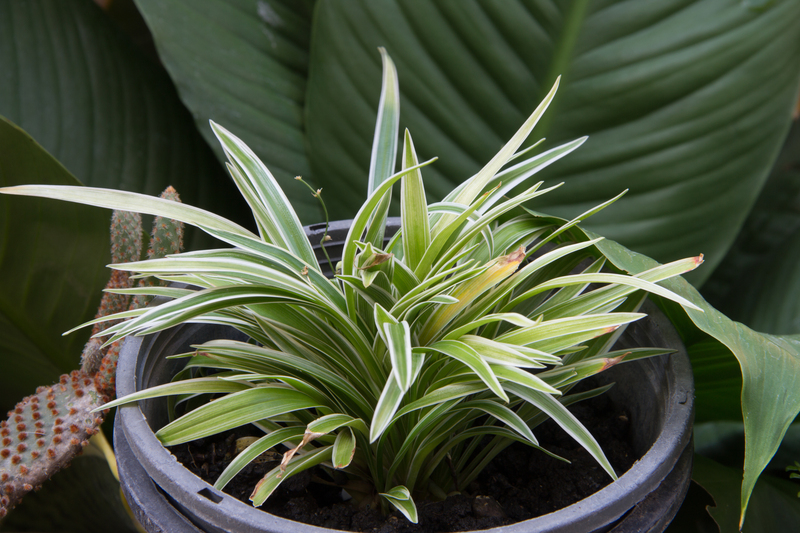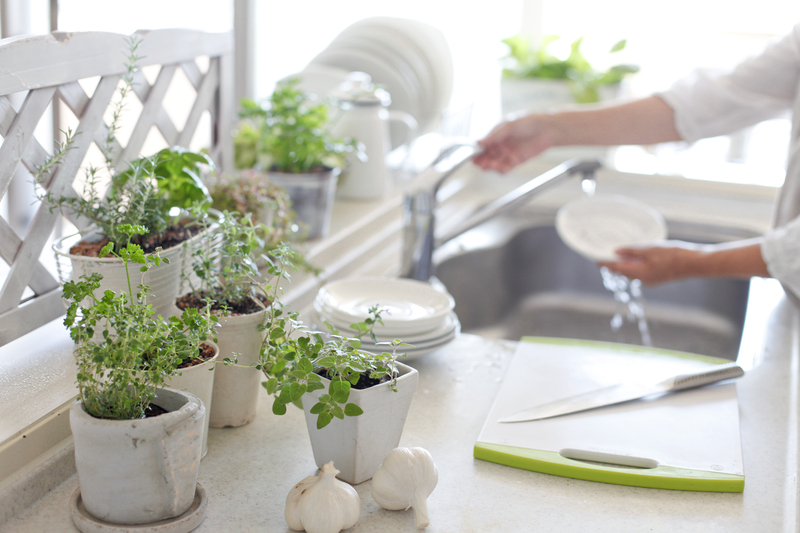Discover Essential Tips to Start Your Own Moveable Garden Today
Urban dwellers and garden enthusiasts alike are embracing the innovative idea of starting their own moveable gardens. If you want to learn how to bring fresh herbs, colorful flowers, and vibrant vegetables to even the smallest of spaces, then you're in the right place. In this comprehensive article, we'll guide you through everything you need to know to discover essential tips to start your own portable oasis. Whether you have a balcony, a tiny patio, or no outdoor space at all, get ready to transform your living environment with a flexible, easily scaled mobile garden.

What is a Moveable Garden?
A moveable garden, also known as a portable garden or mobile planter, is a versatile gardening system designed for flexibility and convenience. Unlike traditional gardens, moveable gardens utilize containers, raised beds on wheels, hanging baskets, or even vertical planters that can be shifted and rearranged to adapt to changing conditions, preferences, or seasonal needs. The ability to re-position these gardens makes them ideal for renters, city dwellers, or anyone seeking a gardening solution that can evolve with their lifestyle.
Why Choose a Moveable Garden?
There are numerous benefits to starting a moveable garden, including:
- Space Maximization: Ideal for small areas like balconies, patios, and rooftops.
- Flexibility: Easily move plants to optimize sunlight exposure or protect them from harsh weather conditions.
- Mobility: Take your garden with you if you move homes, or rearrange for different occasions and seasons.
- Pest and Disease Control: Isolate infected or infested plants easily to prevent widespread damage.
- Accessibility: Adapt the garden's height and placement for ergonomic gardening, great for those with limited mobility.
Now, let's discover essential tips to start your own moveable garden today and enjoy the joys of gardening wherever you reside!
1. Plan Before You Plant
Assess Your Available Space
Begin your moveable gardening journey by examining the area where your garden will thrive. Consider access to sunlight, wind exposure, and proximity to water sources. Sketch a simple layout or create a list of potential spots on your balcony, doorstep, or windowsill.
Understand Your Light Conditions
The success of your portable garden depends heavily on sunlight. Observe the pattern of natural light throughout the day. Most edible plants require at least 6 hours of direct sunlight. If your space is limited to partial or indirect sun, opt for shade-tolerant plants like lettuce, spinach, or certain herbs. Knowing your light situation helps you select the right plants and anticipate when you may need to move your garden to optimize their exposure.
2. Select the Right Containers for Your Moveable Garden
Choose Functional and Stylish Containers
The heart of every moveable garden is its containers. Today, there is a vast selection, from traditional terracotta pots and plastic planters to inventive options like repurposed buckets, crates, and even wheeled carts. When choosing containers, keep the following in mind:
- Weight: Lightweight materials (plastic, resin, or fabric pots) are easy to transport, while wooden or ceramic pots may be heavier but can offer better insulation.
- Mobility Features: Select containers with built-in wheels or attach dollies for easy relocation.
- Drainage: Ensure adequate drainage holes to prevent root rot and overwatering.
- Size: Match container size to the needs of the plant--larger containers for deep-rooted vegetables, smaller pots for herbs and flowers.
- Style: Choose colors and designs that complement your space and personal aesthetics.
TIP: Try stackable or tiered planters for growing a variety of crops in a compact footprint!
3. Pick the Perfect Plants for Your Mobile Garden
Match Plants to Your Environment
Selecting the right plants makes all the difference in the success of your portable garden. Consider your local climate, the amount of sunlight available, and your gardening goals. Here are some popular choices for moveable gardening:
- Herbs: Basil, mint, parsley, thyme, chives, and oregano are easy to grow and thrive in small pots.
- Leafy Greens: Lettuce, spinach, kale, Swiss chard, and arugula grow quickly and don't require deep root space.
- Vegetables: Cherry tomatoes, hot and sweet peppers, radishes, and dwarf carrots are compact and productive.
- Fruits: Strawberries and dwarf fruit trees, like citrus, can flourish in containers.
- Flowers: Marigolds, petunias, violas, and nasturtiums add color and attract pollinators.
Don't forget to explore native plant options or those that excel in container environments!
4. Use the Right Soil Mix for Portable Gardens
Gardeners sometimes overlook the important role potting mix plays in a moveable garden's success. Unlike ground soil, the mix in containers must provide nutrients, proper drainage, and structure for healthy plant growth.
- Use a high-quality, organic potting mix formulated for containers.
- For edible plants, add compost for sustained nutrition.
- Consider using moisture-retaining crystals or coconut coir to reduce watering needs.
- Never use plain garden soil in containers, as it tends to compact and drain poorly.
For special crops (like cacti or orchids), look for specialty soil blends to match their requirements.
5. Master Moveable Garden Watering Techniques
Watering Needs for Mobile Gardens
Because container gardens dry out faster than in-ground beds, consistent moisture is crucial. Underwatering can stress plants, while overwatering can cause root rot.
- Check soil moisture daily by poking your finger an inch below the surface. Water when the soil feels dry at this depth.
- Use self-watering planters or add a layer of mulch to retain moisture.
- Choose watering cans or hoses with gentle sprayers to avoid disturbing soil and seedlings.
- Group containers with similar watering needs together for easier care.
Pro Tip: During hot weather, move containers to shaded areas in the afternoon to reduce evaporation!
6. Fertilize for Healthier, More Productive Plants
Moveable gardens rely on the nutrients provided in their confined soil environment. To keep plants thriving:
- Use a slow-release organic fertilizer mixed into the soil at planting time.
- Supplement every 3-4 weeks with liquid plant food, especially for fast-growing edibles.
- Avoid over-fertilizing, as excess nutrients can harm plants or encourage pests.
Monitor plant leaves for signs of deficiencies (yellowing, stunted growth) and adjust fertilization as needed.
7. Pest and Disease Management for Portable Gardens
One of the great advantages of a moveable garden is the ease of pest and disease management. You can relocate infected plants away from healthy ones and use targeted treatments, such as:
- Inspect plants weekly for early signs of infestation or disease.
- Handpick pests like caterpillars or aphids when possible.
- Use organic solutions such as neem oil, insecticidal soap, or homemade garlic spray.
- Encourage beneficial insects like ladybugs or lacewings by planting companion flowers nearby.
Rotate the position of your containers to disrupt pest life cycles or place reflective mulch to deter flying pests.
8. Maximize Efficiency with Vertical and Hanging Solutions
Go Up, Not Out
When floor space is at a premium, vertical gardening and hanging planters are your best friends. Install trellises, shelves, or wall-mounted flower pots to grow vines, trailing plants, or even clusters of pots in a layered arrangement.
- Use shoe organizers, stacked crates, or vertical pallet gardens for leafy greens and herbs.
- Hanging baskets are perfect for strawberries, cherry tomatoes, and herbs like thyme or oregano.
- Wall planters bring both beauty and fresh produce at your fingertips.
Vertical gardens not only increase your planting area but also add privacy and lushness to small outdoor rooms!
9. Make Your Garden Moveable
The core benefit of this gardening style is mobility. Here's how to ensure your garden is truly portable:
- Install heavy-duty casters or wheels on raised beds and large planters for easy repositioning.
- Use light, durable materials for containers that need to be lifted.
- Plan walkways and clearings so you can move your garden without obstacles.
- If using a cart or wagon, ensure it has a stable platform and locking wheels.
Always test-transport larger containers before filling with soil to confirm ease of movement.
10. Seasonal Moveable Garden Care
Moveable gardens allow you to respond dynamically to changing seasons. Here are some essential tips:
- Bring tender plants indoors or into shelters before the first frost.
- Swap out summer vegetable crops for cool-season greens in the fall.
- Use rolling planters to chase the sun in winter when daylight is limited.
- Clean and disinfect containers between plantings to prevent disease buildup.
11. Creative Ideas for Moveable Gardens
Get creative with your garden! Personalize your moveable garden with these ideas:
- Repurposed Items: Transform old wagons, wheelbarrows, or furniture into quirky planters.
- Color and Texture: Combine flowers and foliage in striking arrangements for year-round interest.
- Theme Gardens: Try a moveable salsa garden (tomatoes, peppers, cilantro) or a fragrant herb trolley.
- DIY Irrigation: Install drip irrigation lines or self-watering trays for low-maintenance gardening.
- Edible Walls: Grow lettuces, strawberries, or herbs on vertical palettes for a living wall effect.
12. Sustainability in Moveable Gardening
Adopt eco-friendly practices while enjoying your garden. Here's how:
- Use biodegradable pots or planters made from recycled materials.
- Collect rainwater for watering your container garden.
- Compost kitchen scraps to enrich your potting mix.
- Practice crop rotation in containers to maintain soil health.
13. Common Mistakes to Avoid in Your Mobile Garden
To ensure your movable gardening project is successful, avoid these pitfalls:
- Using the wrong soil--always use a quality potting mix.
- Overcrowding containers--give plants space to thrive.
- Inconsistent watering--set a schedule or use self-watering systems.
- Not considering weight and mobility--test before adding soil or plants.
- Ignoring light requirements--move your garden as needed for sun exposure.

14. Moveable Garden Success Stories
Across the world, many have turned to portable gardens for practical, aesthetic, and even therapeutic benefits. City residents have converted fire escapes to lush green spaces. Suburban families use rolling carts for kids' vegetable gardens. Even offices and schools have adopted movable gardens for easy classroom or workspace transformations.
Let these stories inspire you and show that with essential tips to start your own moveable garden, almost anyone can join the green revolution!
Conclusion: Take the First Step Towards Your Own Moveable Garden Today!
Embarking on your moveable garden adventure is a fantastic way to bring natural beauty, fresh flavors, and a sense of accomplishment into your life--no matter where you live. With these essential tips at your fingertips, you're equipped to choose the best plants, containers, and designs that fit your unique space and vision. Remember, gardening is an ongoing journey--adapt, experiment, and enjoy the process!
Unleash your creativity and flexibility with a beautiful, practical moveable garden. Start today, and soon you'll enjoy fresh herbs, homegrown vegetables, or colorful blooms that move with you, wherever life takes you.
For more gardening inspiration and guides, keep exploring our site and share your progress with the moveable garden community!